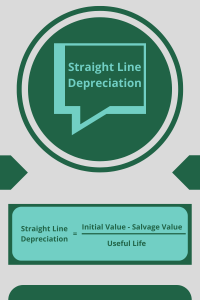
As far as accounting goes, straight-line depreciation is a straightforward calculation for small business accounting. Be sure to focus on getting the right numbers to ensure accuracy. This will help solve problems and avoid raising questions with your investors and stockholders.
Physical Assets
Straight line depreciation is best suited for the expenses of physical assets over time. This is good for tax situations where your business owns several physical assets such as vehicles and machinery. Determining the value of these assets before tax time can ease confusion and make tax filings easier to prepare.
The Formula
The basic formula requires you to know only three figures. Those figures are the asset’s original value, salvage value, and useful life in years. The calculation is a two-step process. First, you subtract the salvage value from the cost of the asset. Then, you take the result and divide it by the useful life in years.
Depreciation Rate
To further determine the rate at which the assets depreciate, you take the basic formula from above and divide it by the difference between the salvage value and the original cost of the assets. This will give you an idea of the estimated value after depreciation for a given asset over a period of time. Calculating these values is very important to helping your small business in financial accounting.
Wrap Up
Purchasing new assets does require a bit of planning to factor in tax implications. After calculating these factors, however, it becomes easier to see what needs to get done in order to stay spot on. Be sure to speak with your small business accountant for your future questions on depreciation. Stay posted for our next entry in the series on depreciation.
